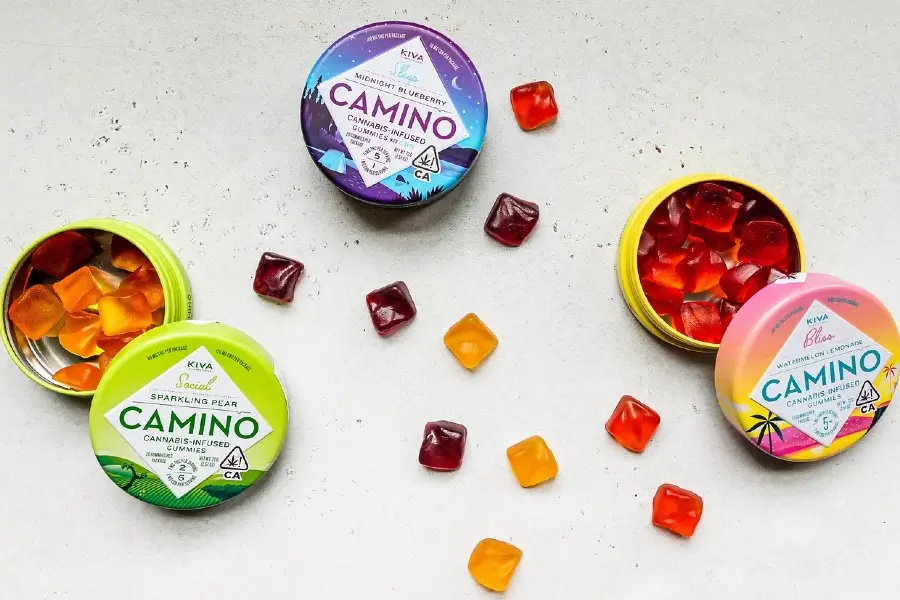Minor Cannabinoids: Exploring Their Potential in Modern Products
Introduction
Cannabis has long been associated with two primary cannabinoids: tetrahydrocannabinol (THC) and cannabidiol (CBD). However, as scientific research continues to expand, minor cannabinoids have emerged as key players in the therapeutic and commercial landscape. These lesser-known compounds offer unique benefits and are gradually being incorporated into consumer and pharmaceutical products.
Minor cannabinoids, such as cannabichromene (CBC), cannabigerol (CBG), cannabinol (CBN), and tetrahydrocannabivarin (THCV), are present in lower concentrations in cannabis plants but have distinct physiological effects. With advancements in cultivation techniques and extraction processes, these compounds are being isolated and integrated into wellness products, medical formulations, and cannabis-infused consumer goods.
One of the driving forces behind the increased demand for minor cannabinoids is their potential therapeutic benefits. Early research suggests that CBG may exhibit neuroprotective and antibacterial properties, while CBC has demonstrated potential for reducing inflammation and promoting pain relief. CBN, primarily known as a byproduct of THC degradation, is gaining attention for its possible sedative effects, making it a sought-after ingredient in sleep aids. Meanwhile, THCV has been studied for its appetite-suppressing and energy-boosting properties, making it a potential tool for metabolic health applications.
From a commercial standpoint, the rise of minor cannabinoids represents a lucrative opportunity for cannabis businesses. Brands are leveraging these compounds to develop specialized formulations that cater to targeted consumer needs. The availability of minor cannabinoids in various product forms—including tinctures, gummies, topicals, and infused beverages—demonstrates how brands are diversifying their offerings beyond traditional THC or CBD products.
The expanding body of research into minor cannabinoids continues to validate their efficacy, paving the way for regulatory acceptance and mainstream adoption. With consumers becoming increasingly educated about cannabis-derived compounds, demand for these specialized cannabinoids is expected to grow. This article will explore the current product applications of minor cannabinoids, examine relevant scientific studies, and discuss how they are influencing the cannabis industry’s future.
Groundbreaking Scientific Research on Minor Cannabinoids
Ongoing scientific research has helped uncover many of the potential benefits of minor cannabinoids, leading to innovative product development in the cannabis industry.
Cannabigerol (CBG): The Neuroprotective and Antibacterial Powerhouse
CBG has gained attention for its potential neuroprotective and antibacterial properties. A 2015 study published in *Neurotherapeutics* suggested that CBG could play a role in protecting against neurodegenerative diseases such as Huntington’s disease due to its ability to support neuronal health [(Borrelli et al., 2015)](https://pubmed.ncbi.nlm.nih.gov/25252936/). Another study found that CBG exhibits antibacterial properties, particularly against methicillin-resistant *Staphylococcus aureus* (MRSA) [(Farha et al., 2020)](https://pubmed.ncbi.nlm.nih.gov/32097744/), which has led to its potential use in pharmaceutical applications aimed at combating bacterial infections.
Cannabichromene (CBC): A Natural Ally for Pain and Inflammation
CBC is believed to enhance pain management and anti-inflammatory responses. A study published in *Drug and Alcohol Dependence* indicated that CBC interacts with the body’s endocannabinoid system by increasing levels of anandamide, a key neurotransmitter involved in mood regulation and pain relief [(DeLong et al., 2010)](https://pubmed.ncbi.nlm.nih.gov/20332000/). The potential for CBC to serve as a natural pain reliever has encouraged manufacturers to incorporate it into topicals and wellness-focused cannabis products.
Cannabinol (CBN): The Sleep-Supporting Cannabinoid
CBN is often linked to sleep and relaxation properties, primarily due to its connection to aged THC. Although research is still limited, a study published in *Sleep Medicine Reviews* explored cannabinoids’ impact on sleep and suggested that CBN could have sedative effects when used alongside other cannabinoids [(Babson et al., 2017)](https://pubmed.ncbi.nlm.nih.gov/28390397/). These properties have positioned CBN as a primary ingredient in cannabis-derived sleep aids, tinctures, and capsules designed to improve sleep quality.
Tetrahydrocannabivarin (THCV): A Potential Metabolic Health Booster
THCV is gaining attention for its potential in weight management and metabolic health. A study published in *Diabetes Care* found that THCV may improve insulin sensitivity and support glucose regulation, suggesting its potential as a therapeutic agent for diabetes management [(Jadoon et al., 2016)](https://pubmed.ncbi.nlm.nih.gov/27793952/). Additionally, THCV has been shown to suppress appetite, making it a sought-after ingredient in cannabis products marketed for weight loss and energy enhancement.
The Expanding Product Landscape of Minor Cannabinoids
Given the unique benefits of minor cannabinoids, cannabis brands are developing targeted products designed to capitalize on these compounds’ specific effects.
CBG-Based Products: Elevating Skincare and Neuroprotection
Given its antibacterial properties, CBG is increasingly being used in topicals, skincare formulations, and therapeutic creams designed to combat bacterial infections and skin conditions such as acne. Companies are also enhancing their traditional cannabinoid-based offerings with CBG-infused tinctures and capsules aimed at neuroprotection and stress relief.
CBC Infusions: A New Frontier in Pain Relief
Due to its suspected anti-inflammatory benefits, CBC is integrated into pain relief balms, muscle recovery creams, and full-spectrum cannabis extracts. Some companies market CBC as a non-intoxicating alternative to traditional anti-inflammatory drugs.
CBN Formulations: The Rise of THC-Free Sleep Aids
As consumer interest in natural sleep aids grows, cannabis brands are formulating CBN-based tinctures, edibles, and capsules designed for nighttime use. Many of these products combine CBN with CBD or melatonin to enhance their sedative effects.
THCV-Infused Products: Harnessing the “Diet Weed” for Energy and Weight Management
Since THCV is known for its appetite-suppressing properties, companies are formulating it into weight management products such as infused beverages, tinctures, and energy-enhancing edibles targeted toward active lifestyles.
With an increasing number of clinical trials and consumer reports supporting the benefits of minor cannabinoids, cannabis manufacturers are poised to expand their product lines and appeal to a wider audience looking for cannabinoid-based wellness solutions.
The Future of Minor Cannabinoids: A Paradigm Shift in Cannabis Science
The emergence of minor cannabinoids is revolutionizing the cannabis industry, offering consumers and medical professionals alternative therapeutic options beyond THC and CBD. Scientific research is reinforcing the value of cannabinoids such as CBG, CBC, CBN, and THCV, leading to innovative product developments that address pain relief, sleep support, metabolic health, and more.
As these compounds continue to gain traction in the marketplace, their integration into mainstream wellness and pharmaceutical formulations is inevitable. The growing understanding of minor cannabinoids marks an exciting evolution in cannabis science, promising more precise, targeted, and effective applications for both personal and medical use.
Summary: The article explores the potential of minor cannabinoids, such as CBG, CBC, CBN, and THCV, in the cannabis industry. It discusses the scientific research behind their therapeutic benefits, including neuroprotection, antibacterial properties, pain relief, sleep support, and metabolic health. The article also examines the expanding product landscape, with brands developing specialized formulations to cater to targeted consumer needs. The future of minor cannabinoids is presented as a paradigm shift in cannabis science, leading to more precise and effective applications for personal and medical use.
References:
– [Borrelli et al., 2015](https://pubmed.ncbi.nlm.nih.gov/25252936/)
– [Farha et al., 2020](https://pubmed.ncbi.nlm.nih.gov/32097744/)
– [DeLong et al., 2010](https://pubmed.ncbi.nlm.nih.gov/20332000/)
– [Babson et al., 2017](https://pubmed.ncbi.nlm.nih.gov/28390397/)
– [Jadoon et al., 2016](https://pubmed.ncbi.nlm.nih.gov/27793952/)




